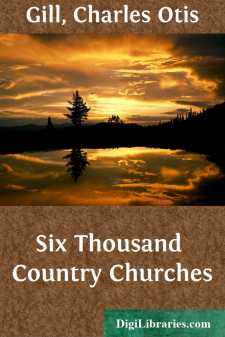Categories
- Antiques & Collectibles 13
- Architecture 36
- Art 48
- Bibles 22
- Biography & Autobiography 813
- Body, Mind & Spirit 142
- Business & Economics 28
- Children's Books 15
- Children's Fiction 12
- Computers 4
- Cooking 94
- Crafts & Hobbies 4
- Drama 346
- Education 46
- Family & Relationships 57
- Fiction 11828
- Games 19
- Gardening 17
- Health & Fitness 34
- History 1377
- House & Home 1
- Humor 147
- Juvenile Fiction 1873
- Juvenile Nonfiction 202
- Language Arts & Disciplines 88
- Law 16
- Literary Collections 686
- Literary Criticism 179
- Mathematics 13
- Medical 41
- Music 40
- Nature 179
- Non-Classifiable 1768
- Performing Arts 7
- Periodicals 1453
- Philosophy 64
- Photography 2
- Poetry 896
- Political Science 203
- Psychology 42
- Reference 154
- Religion 513
- Science 126
- Self-Help 84
- Social Science 81
- Sports & Recreation 34
- Study Aids 3
- Technology & Engineering 59
- Transportation 23
- Travel 463
- True Crime 29
Six Thousand Country Churches
Description:
Excerpt
INTRODUCTION
In 1913 Mr. Gill and I published, under the authority of the Federal Council of the Churches of Christ in America, the results of an inquiry into the condition of the country church in two typical counties—Windsor County, Vermont, and Tompkins County, New York. The disclosure of the conditions in these two counties and the conclusions to which they pointed led to the creation of the Commission on Church and Country Life of the Federal Council. Under the direction of the Commission, it was resolved to extend the investigation of the country church to an entire State. For the reasons given hereafter, the choice fell upon Ohio.
For the plan whose execution and results are here set forth, Mr. Gill and I are jointly responsible. It was submitted to, and revised and approved by, the Commission on Church and Country Life, in whose name and under whose direct supervision it was carried out. The field work was done entirely by Mr. Gill or under his immediate direction as Secretary of the Commission, and he also worked up in the office the result of his work in the field. As in the case of “The Country Church,” I am responsible for the final revision of the manuscript for the press. It is now published with the approval of the Commission on Church and Country Life, and as a report of its work.
In the introduction to “The Country Church,” I said and I desire to repeat,—“Mr. Gill’s peculiar fitness for the work of this investigation arises in part from his long and intimate personal acquaintance with the problem of country life. For fifteen years he has been a country minister. One of his tasks was to establish a church in a country community in Vermont which had been without one for more than twenty years. When Mr. Gill came to it, the moral and social laxity of the whole community was flagrant. Disbelief in the existence of goodness appeared to be common, public disapproval of indecency was timid or lacking, and religion was in general disrepute. Not only was there no day of worship, but also no day of rest. Life was mean, hard, small, selfish, and covetous. Land belonging to the town was openly pillaged by the public officers who held it in trust; real estate values were low; and among the respectable families there was a general desire to sell their property and move away.
Then a church was organized. The change which followed was swift, striking, thorough, and enduring. The public property of the town, once a source of graft and demoralization, became a public asset. The value of real estate increased beyond all proportion to the general rise of land values elsewhere. In the decade and a half which has elapsed since the church began its work, boys and girls of a new type have been brought up. The reputation of the village has been changed from bad to good, public order has greatly improved, and the growth of the place as a summer resort has begun. It is fair to say that the establishment of the church under Mr. Gill began a new era in the history of the town.”
It was with this record of practical success in the country church, supplemented by the very unusual experience as an investigator which he acquired in collecting and analyzing the material for “The Country Church,” that Mr....


